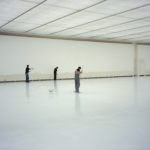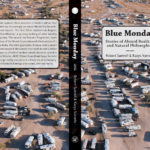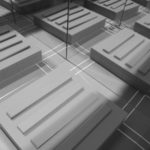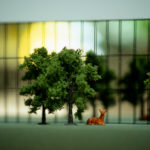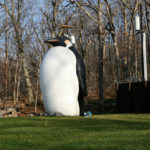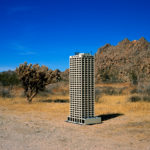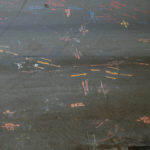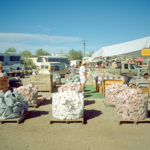stories of absurd realities and natural philosophies
by audc [robert sumrell and kazys varnelis]
Prior to the Enlightenment and the development of the scientific method, science was dominated by natural philosophy, a method of studying nature and the physical universe through observation rather than through experimentation. Virtually all contemporary forms of science developed out of natural philosophy, but unlike more modern scientists, natural philosophers like Galileo felt no need to test their ideas in a practical way. On the contrary, they derived philosophical conclusions from individual observations of the world. Taken together, these didn’t necessarily add up. But the lack of metanarrative for natural philosophy is not an obstacle for us, instead it is a strength, encouraging further investigation instead of satiating desire.
Natural philosophy flourished from the twelfth to the seventeenth centuries and with it did “cabinets of curiosities,” sometimes entire rooms, sometimes quite literally elaborate cabinets, filled with strange and wondrous things. These first museums collected seemingly disparate objects of fascination in a specific architectural setting, assigning to each item a place in a larger network of meaning created by the room as a whole. In the cabinet each object would be a macrocosm of the larger world, illustrating the wonder of its divine artifice. Together however, their affinities would become apparent and a syncretic vision of the unity of all things would emerge, as the words Athanasius Kircher inscribed on the ceiling of his museum suggested: “Whosoever perceives the chain that binds the world below to the world above will know the mysteries of nature and achieve miracles.” For the natural philosopher, the cabinet of curiosities possessed a reflexive quality: it was both an exhibition and a source of wonder, a system the natural philosopher built to instruct others but also to coax himself into further thought.
This book is a cabinet of curiosities, consisting of a series of conditions that AUDC observes in order to speculate on them in the manner of natural philosophy, extrapolating not theories to apply to architecture but rather philosophies to explain the world. The result is neither relativist pluralism nor a single monist philosophy, but rather a set of multiple philosophies that almost add up, but being situationally derived, don’t quite.
Blue Monday is a book of non-fiction fables, collecting three stories—Ether, the Stimulus Progression, and Swarm Intelligence—that touch on our daily lives along with three brief interludes—My Dear Berlin Wall, Voluntary Slavery, and Mike—to illustrate the ways that people relate to each other and to the world around them.
The three interludes are hopeless causes, each a story of damaged love for an object: a Swedish woman’s marriage to the Berlin Wall, a collector’s obsessive desire for his records, and a farmer’s devotion to a headless chicken.
The three longer stories explore One Wilshire, the place where the Internet becomes physical while we become media; Muzak, the soundtrack to daily life as well as an invisible reshaper of cities; and Quartzsite, Arizona, an instant city based on the exchange of rocks. These three are intimately connected to architecture yet remain outside of it—a banal office building, a kitschy soundtrack, a brutally anti-aesthetic patch of desert filled with motorhomes.
Architecture is unnecessary to them and to make standard architectural responses in them would be absurd. But that is precisely what draws us these stories—each one is a self-sufficient utopia that threatens to take over the world. Using research and speculation, we seek the organizational logics that motivate them, as well as the disorganizational factors that doom them. Their total conditions—the virtual world of the Internet, the all-pervasive nature of Muzak, and the threat of ephemerality and arbitrariness that Quartzsite levels at the contemporary city—exemplify the outcroppings of Empire that remain hidden in plain sight. Although—with the exception of the interlude on the Berlin Wall—these conditions are found in the United States, we claim no priority for that save for Antonio Negri and Michael Hardt’s suggestion that if Empire had a dominant country, it would be the United States. There is nothing particularly American about our stories; to the contrary, they all have global implications. But we don’t set out to justify our parochialism, rather we beg the reader to excuse us. We found most of the objects of study in Blue Monday near Los Angeles, our first base. This book marks the completion of the first phase of AUDC’s work. Our hope for this book is that it will arouse in our readers the same sense of wonder and amazement at these conditions that has compelled us on our own lemming-like quest to investigate them.
